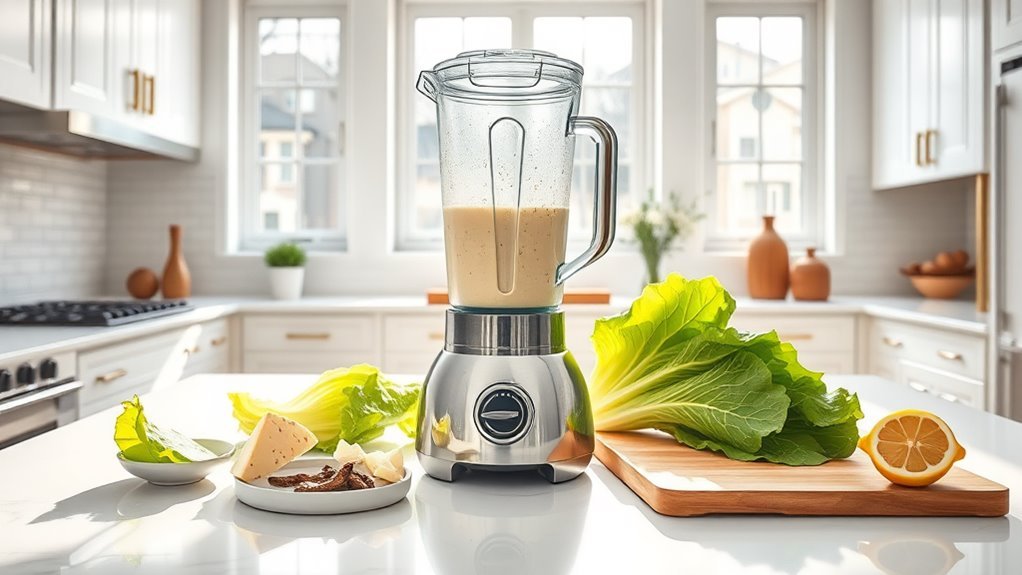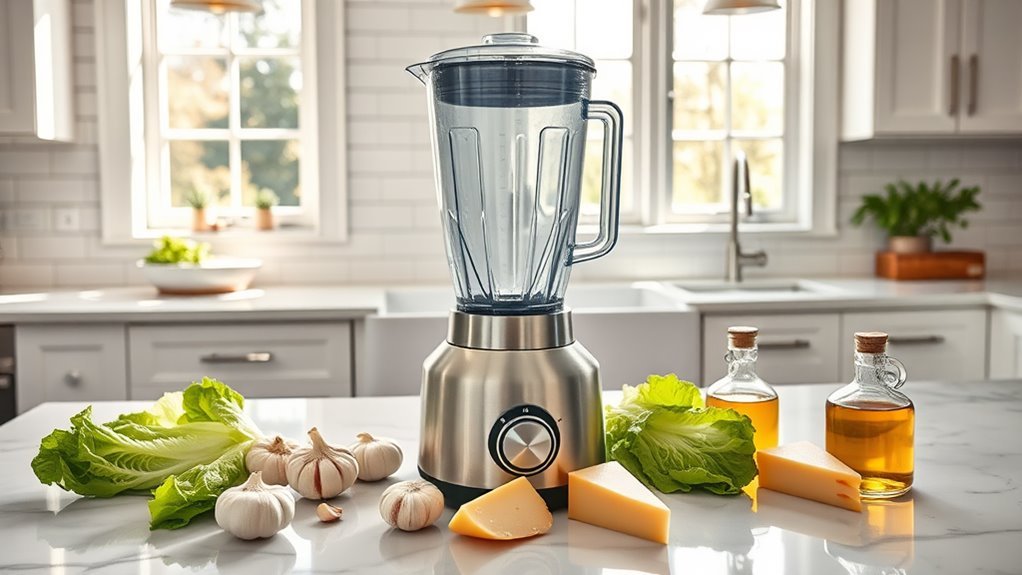Winter meals tend to fall into predictable patterns, and perhaps that’s why many home cooks find themselves craving something fresh as spring approaches. Caesar salad feels like an obvious choice, though the bottled dressing versions never quite deliver the punch they promise. Making it from scratch seems intimidating at first—raw eggs, anchovies, the whole emulsification process. But there’s something about creating that perfect creamy texture yourself that transforms an ordinary salad into something genuinely satisfying.
Spring Cooking Revival: Breaking Out of Winter’s Meal Monotony

Spring’s arrival brings longer daylight hours and warming weather that naturally revitalizes our cooking enthusiasm. Perhaps it’s the sight of neighbors firing up their BBQs again, or maybe just the simple pleasure of opening windows while preparing meals.
Winter often traps us in a culinary rut—the same hearty soups, casseroles, and comfort dishes on repeat.
But sunny weekends encourage outdoor entertaining and fresh approaches to familiar favorites. A homemade Caesar dressing might seem simple, yet it represents that shift toward brighter, more varied meals that spring inspires. Investing in a high-performance blender can elevate your dressing-making experience, ensuring a perfectly smooth and creamy texture that enhances your salads.
Essential Ingredients for Authentic Caesar Dressing
The foundation seems simple, but each component plays an essential role in achieving that distinctive tangy, umami-rich flavor profile.
The essential ingredients include:
- Anchovies – Whether fillets or paste, these provide the signature depth
- Quality parmesan cheese – Fresh grated works best, though pre-grated suffices
- Multiple oils – Both vegetable and olive oil create proper texture
- Bold mustard varieties – Horseradish or Dijon add complexity beyond basic yellow
Perhaps the biggest mistake is skipping anchovies entirely, thinking they’re optional. Additionally, using high-performance blenders can enhance the texture and emulsification of your dressing for a smoother consistency.
Step-by-Step Blending Technique for Perfect Consistency

The blending process determines whether your Caesar dressing achieves that smooth, creamy consistency or ends up as a separated, oily mess.
Start by pulsing the first five ingredients three to five times in your Cuisinart or immersion blender—though I think four pulses usually does the trick.
The vital step comes next: slowly drizzle vegetable oil while running the blender on low speed. Perhaps this seems tedious, but rushing here creates that dreaded separation.
After incorporating salt and pepper, repeat the slow oil addition with olive oil. Finally, blend in parmesan cheese for the finishing touch.
Creative Variations and Flavor Enhancements
Once you’ve mastered the basic technique, exploring different flavor profiles becomes the fun part—and perhaps where this recipe really shines. The traditional anchovy base provides endless possibilities for customization.
- Chipotle twist – Adding chipotle peppers in adobo sauce creates a smoky, slightly spicy version that works beautifully with grilled vegetables
- Mustard variations – Horseradish or Russian mustard can replace regular Dijon for sharper, more complex flavors
- Herb enhancement – Fresh garlic or dried herbs like oregano bring Mediterranean flair
- Citrus adjustment – Extra lemon juice brightens the entire dressing, though it might overpower delicate greens
Frequently Asked Questions
How Long Does Homemade Caesar Dressing Last in the Refrigerator?
Homemade Caesar dressing typically lasts three to five days when stored properly in the refrigerator. The fresh ingredients, particularly raw egg and anchovies, limit its shelf life compared to commercial versions.
Can I Make Caesar Dressing Without Raw Eggs Safely?
Caesar dressing can be made safely without raw eggs by using pasteurized eggs, mayonnaise as a base, or egg substitutes. These alternatives maintain the creamy texture while eliminating salmonella risk from raw eggs.
What’s the Best Way to Store Leftover Caesar Dressing?
Like medieval preserves in cool cellars, leftover Caesar dressing stores best refrigerated in airtight containers for up to one week. The oils may separate, but gentle whisking restores smooth consistency before serving.
Can I Freeze Homemade Caesar Dressing for Later Use?
Freezing homemade Caesar dressing is not recommended. The emulsion will break when thawed, causing separation and texture changes. Oil-based dressings with dairy components like parmesan cheese don’t freeze well and lose quality.
How Do I Fix Caesar Dressing That’s Too Thick or Thin?
Is Caesar dressing consistency off? For thick dressing, gradually whisk in water or lemon juice until desired texture forms. For thin dressing, slowly blend additional parmesan cheese or egg yolk to achieve proper thickness.
Conclusion
Crafting Caesar dressing at home becomes the culinary equivalent of finding a perfect spring jacket—once you discover the right fit, you wonder why you ever settled for store-bought alternatives. Perhaps the real magic lies in those small adjustments, the extra anchovy or splash of lemon that transforms ordinary greens. Sure, it requires a bit more effort, but the payoff speaks for itself in every creamy, tangy bite.

